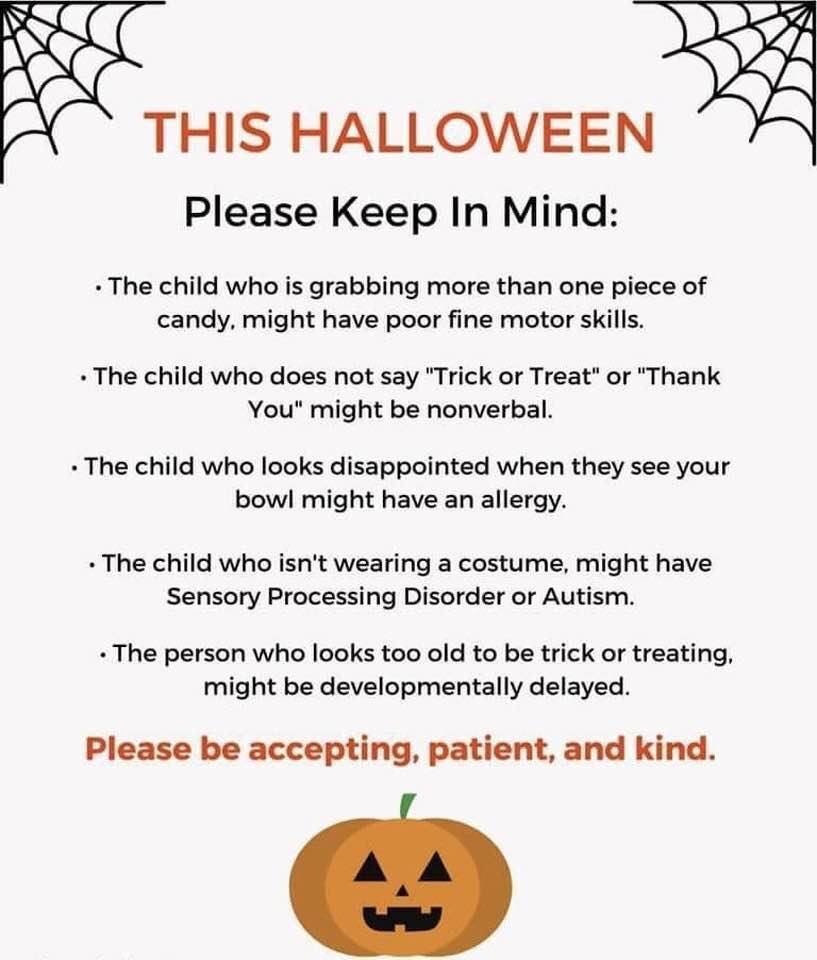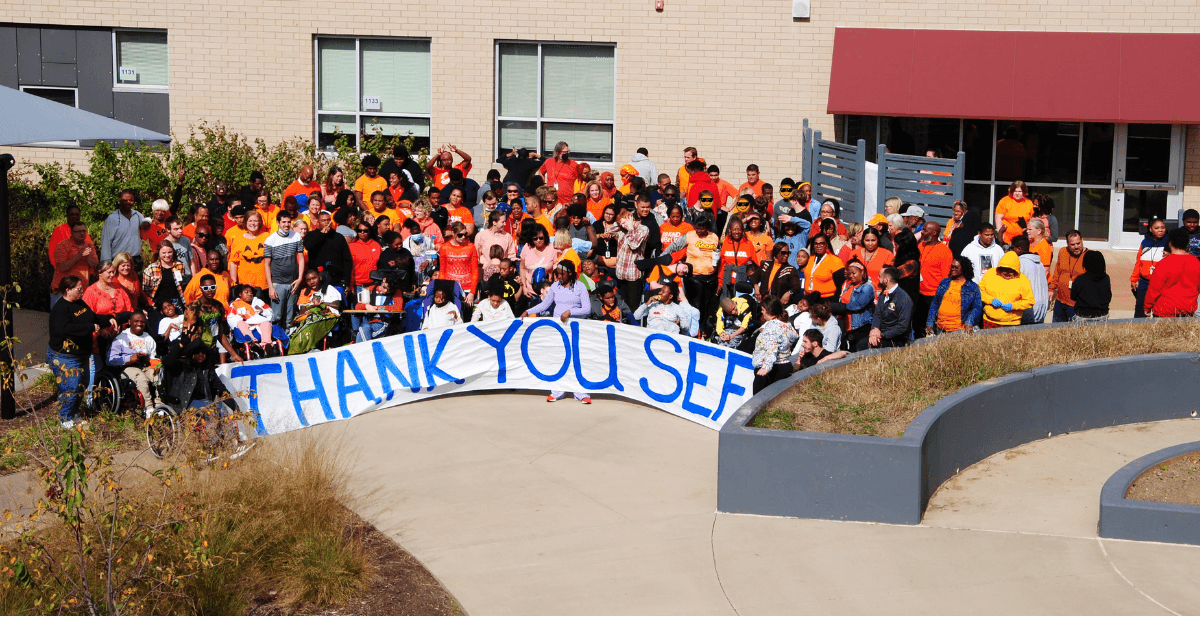
When Katelyn Collins spotted a Harry Potter costume in August, she envisioned how perfect a lightning bolt would look peeking out from beneath her 7-year-old son’s Harry-like dark brown hair on Halloween night.
But the mental snapshot faded quickly as she inspected the costume for far more important qualities than looks.
She realized it wasn’t much more than a cape and a scarf, which would allow him to wear his regular clothes underneath. There were no zippers or buttons. It wasn’t too heavy. The material wasn’t scratchy.
Collins considers such things because her son, Knox, has autism. He struggles with pretend play, like dressing up, and finds most costumes overwhelmingly uncomfortable.
“I think we think, ‘Oh, this is so fun, to put costumes on,’ but he’s always challenged my perception of that,” Collins, an educational and behavioral consultant, said. “He’s like, ‘I’m Knox. I don’t know why you’d want me to be a dog.'”
Knox is counted among the 1 in 36 American children diagnosed with autism spectrum disorder and the 1 in 6 American children, ages 3 to 17 years old, diagnosed with a developmental disability.
And many of those kids, maybe with assistance, will be ringing doorbells on Halloween night.
To Erin Troup, owner and therapist at Sprout Center for Emotional Growth and Development, an outpatient and early childhood consultation group in Brentwood, Halloween serves as a good reminder to “keep disability at the front” when a child’s behavior seems uncommon.
“It’s unlike anything else,” Troup said of Halloween night. “It’s spooky. It’s creepy. We shelter kids from that stuff all other times of the year, and then it’s right there in someone’s front yard.
“There’s enough going on there that a typical kid will melt down, but a child with challenges, it’s a lot to think about.”
Almost every facet of trick-or-treating can be a chance to stumble for kids who are less able to “go with the flow.”
Choosing just one piece of candy from a mixed bowl can challenge kids’ fine motor skills, and making that decision quickly, while waiting kids clamor for their chance, can cause panic in those who struggle with motor planning. Saying “trick or treat” and “thank you” might not come easily to kids with communication disorders or those who are anxious or distracted by the stimulation of Halloween night.
And after 19 months of varying levels of social distancing for COVID-19, some of the smallest trick-or-treaters are still catching up to average levels of language and social proficiency.
“The research is just coming through about language and cognitive delays in children who haven’t had interactions with other children,” Troup said. “There are kids who were born during, or right before, the pandemic who will be trick-or-treating for the first time. They just don’t know how to do this.”
But sometimes, too much experience is the problem.
Cheryl Dennis’ 19-year-old son, Spencer, stands 6-foot-3, and he loves to go trick-or-treating.
“Most people give him candy but can’t resist saying things like, ‘Aren’t you a little old for trick-or-treating?'” Dennis, 47, of Morningside, said. “I can tell it makes him feel badly, but he keeps wanting to go do it. He looks neurotypical, so people expect him to be and say things that can really hurt his feelings.”
Spencer has a condition called alternating hemiplegia of childhood, which causes recurrent episodes of temporary paralysis and is accompanied by cognitive problems, intellectual disability and developmental delay. In Dennis’ words, “He’s like an 11-year-old in a man’s body,” who doesn’t understand that Halloween is typically reserved for young children.
Plan ahead
According to Dr. Victoria Winkeller, a Children’s Hospital of UPMC psychiatrist, preparation for Halloween, or any challenging situation, is key.
Reading Halloween-themed books, sharing pictures of decorated yards and people in costume, trying on costumes and role-playing the social and physical aspects of trick-or-treating can all help.
“Prepare something ahead that’s appropriate for your child because you know best,” she said. “It’s a change of routine. There are new sounds and new lights, people in costume. It can be really overwhelming for a lot of reasons.”
That’s why Collins purchased the Harry Potter costume in early September.
At first, she only showed it to Knox because he had no desire to put it on. By early October, he still only wished to take glances at it. But about a week later, his parents put on a Harry Potter movie and brought out the costume. His dad, Patrick, put it on just to be silly, which convinced Knox to do the same.
“If I take those steps in advance, hopefully come Halloween, when we’re ready to go trick-or-treating, it’s not, ‘Oh my goodness, this is a crisis,’ everyone’s sweating, and we’re both in tears,” said Collins. “It’s desensitizing him to the idea of the costume. We’re working up to him letting us draw the scar on his forehead.”
Consider transparency
Many neighbors near Cheryl Dennis’ Morningside home know Spencer, which allows him to trick-or-treat mostly among those who understand his differences.
Winkeller endorses that strategy but knows it isn’t always possible. Instead, some families in her practice make signs or pins that denote the child’s special needs. That method allows strangers to immediately adapt their responses to the child, but it does require comfort with sharing personal information.
For those less inclined to do so, she recommends families create a “friendly, light moment” by approaching the door as a group, maybe all in costume or in matching shirts, and saying something like, “We just love this holiday so much and we want to enjoy it together. Our child is someone who has some extra challenges and wants to enjoy this.”
Offer choices
Troup recommends offering choices while trick-or-treating, like which houses to visit, the chance to avoid scary ones and when to be done for the night.
Despite nearly three months of preparation, Knox’s parents assume he’ll visit about 10 houses before saying he’s finished, as he’s done for several years. And, as they walk, the Collinses will check in with their son to make sure he’s still having a good time, which is another of Troup’s pro tips.
“You might consider their age and think you’ll get through a bunch of streets or houses, but your child might get so overwhelmed just taking in everything that’s going on, they might melt down sooner than you think, especially if there’s a lot of kids,” she said.
Troup sometimes suggests a “not right now” approach to trick-or-treating in favor of more controlled activities like a scavenger hunt at home or having the child give out candy rather than collecting it.
That might sound like a simpler approach for kids like Knox, but, as always, caregivers know best.
It took over a month of acquainting Knox with his costume before he tied on the cape and wrapped the crimson and gold scarf around his neck. But, once he did, he immediately reached for his wand and began reciting movie dialogue in his best British accent.
“I know once I get him out of his own way, he’ll have a great time,” Collins said.
Be flexible
While professionals help to prepare their differently abled clients for special events like Halloween, community members can do their part by easing expectations.
“We shouldn’t have any preconceived notions about what Halloween should or shouldn’t be, other than a safe space for neighbors to get together, say hi to each other and welcome kids to do something fun,” Winkeller said. “I’d remind people to be welcoming and kind and get rid of expectations and have opportunities for everyone to enjoy the night.”
Shunning expectations for Halloween proves successful for families of children with special needs, as well.
Having gained comfort with his Harry Potter costume, Knox seems to be looking forward to trick-or-treating. But if he changes his mind, Collins said that will be OK.
“It’s not the end of the world if your kid doesn’t dress up for Halloween,” she said.
“When you have a kid who doesn’t do holidays the way everyone does holidays, it takes some thinking and planning. And it’s good for the wider world to think about that, too.”
Republished from Disability Scoop and The Pittsburgh Post-Gazette

